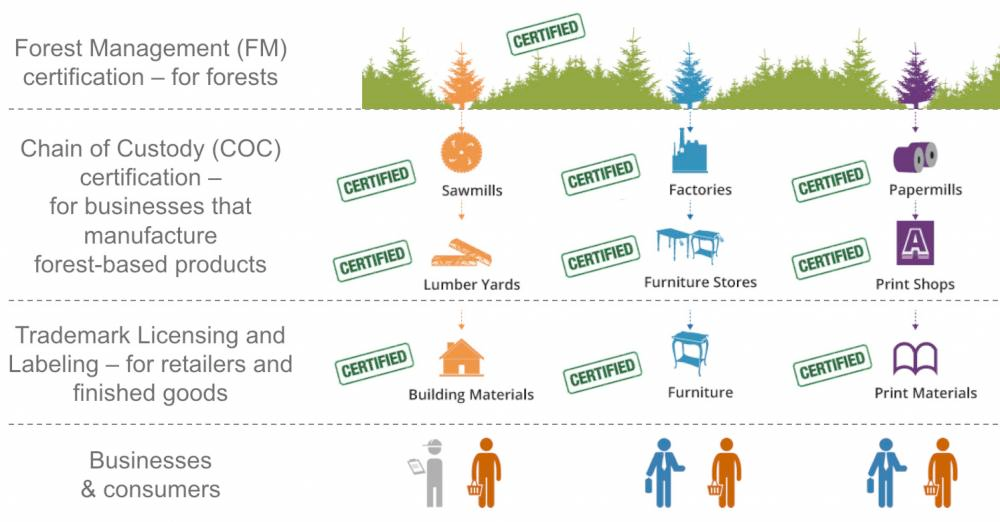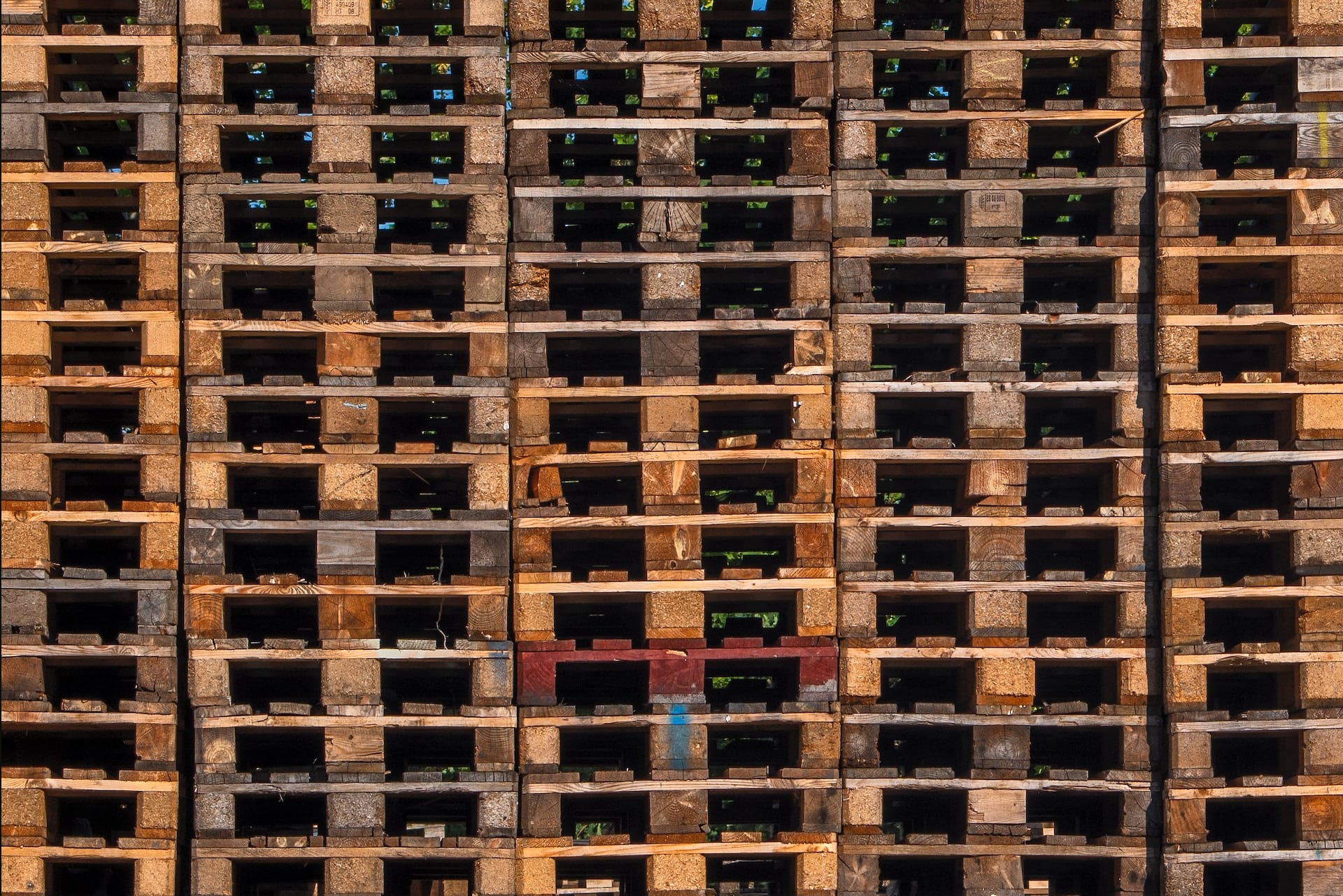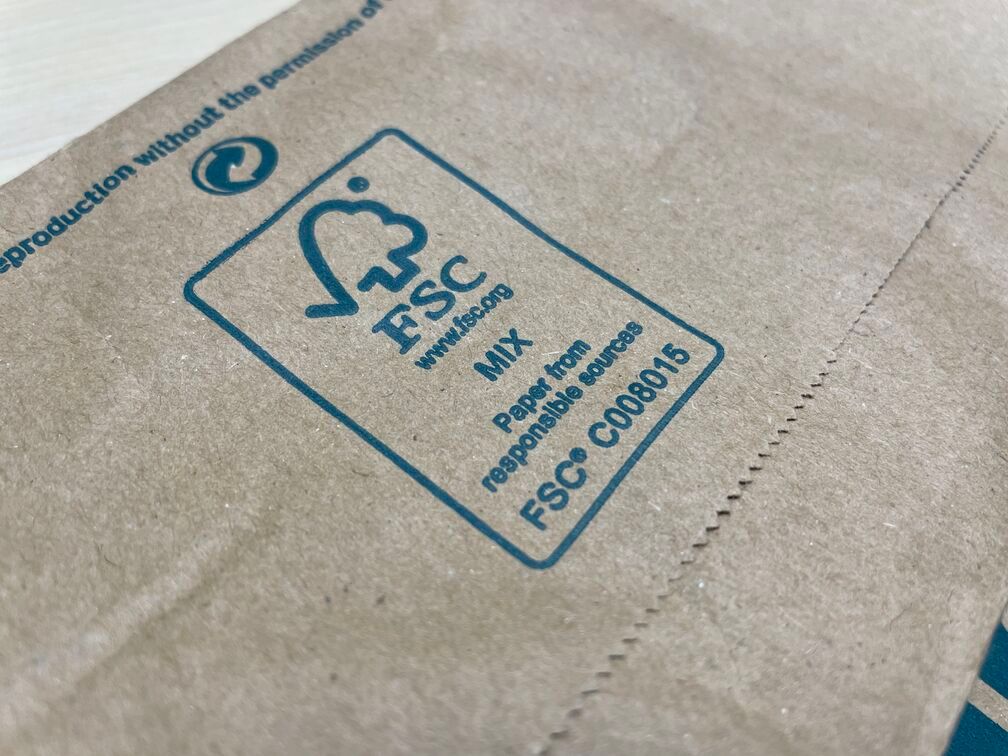It's not just about feeling good – it's about making a real difference. In this post, we’ll deep dive into the world of sustainability through FSC packaging, and discover how we can all play a part in taking care of our beautiful planet.
What is FSC™ Packaging?
FSC Packaging refers to packaging materials that are sourced from forests certified by the Forest Stewardship Council™. FSC packaging is designed to be compliant responsible forest management standards, ensuring that the production of wood and paper products is environmentally appropriate, socially beneficial, and economically viable.
The Forest Stewardship Council™ and its mission
The Forest Stewardship Council™ is an international NGO promoting responsible forestry, with a governing body over 1,000-strong representing 89 countries. They were established in 1993 in response to the 1992 Earth Summit failing to address the problem of deforestation. Since then, the FSC has certified over 210 million hectares of forest, and their “check-tree” logo has become one of the most recognizable labels of sustainability.
Importance of FSC™ Certification
FSC Packaging refers to packaging materials derived from responsibly managed forests certified by the Forest Stewardship Council™. By choosing FSC-certified products, businesses and consumers support sustainable forestry practices and contribute to a healthier environment. The FSC certification system ensures that the entire supply chain, from forest to end product, meets strict environmental, social, and economic standards.
What is a FSC™ Certification & Label?
FSC certification is granted by independent bodies to ensure impartial judgment. This label assures consumers that products have been made using sustainably sourced materials – "sustainable" here encompasses several things, including:
- Ensuring zero deforestation (i.e. making sure that the area of the forest doesn’t decrease), such as through reforestation efforts
- Promoting biodiversity and protecting wildlife habitats
- Respecting local communities including indigenous people
- Employing workers under fair conditions (e.g. paying fair wages, providing adequate safety training and equipment, not using child labour)
The FSC label can be used on any product using materials sourced from forests, from paper and packaging to cork stoppers and rubber shoe soles. There are three types of FSC labels.
- FSC 100% – the forest-based material used in these products are all virgin and entirely sourced from FSC-certified forests.
- FSC mix – the material is from a mixture of (a) FSC-certified forests, and/or: (b) Recycled materials, and/or (c)FSC-controlled wood.
- FSC recycled – the forest-based material is all recycled material.

Each FSC label comes with a license code, which is assigned to each entity that is allowed to use the FSC trademarks. As such, every business or organization has their own unique FSC label.
For example, PackMojo's FSC™ license code is FSC-C198591.
Types of FSC™ Certifications
FSC has established two primary types of certification to ensure that FSC labeled materials and products originate from responsible sources. These certifications play a crucial role in promoting sustainable forest management and guaranteeing the traceability of eco-friendly forest-based products:
Forest Management (FM) certification
This certification is designed for forest managers and owners, ensuring their forest stewardship practices align with international standards and contribute to responsible forest management.
Chain of Custody (CoC) certification
Intended for businesses dealing with forest-based products, this certification allows them to meet legislative requirements, improve market access, and demonstrate their commitment to sustainability by maintaining a traceable supply chain.
By adhering to these two main types of FSC certifications, organizations and individuals can contribute to the responsible sourcing of forest-based materials and promote a sustainable future for our planet's forests.
For example, if you are a book manufacturer and you want to label your books with the FSC logo, the forest you source materials from needs to be FSC certified and every other business involved in making/handling these materials (e.g. the paper mill) also needs to be certified. This is called "chain-of-custody (CoC) certification".

Retailers that simply buy FSC-labeled products and sell them, unmodified, to consumers (e.g. a publisher) do not need to undergo CoC certification to use the FSC logo – they just need to apply for a trademark license or promotional license. This license allows the retailer to use the FSC logo to promote their goods (e.g. on their website, in retail locations, in ads).
Benefits of FSC™ Packaging
Environmentally Friendly
FSC Packaging is an environmentally friendly choice as it promotes responsible forest management. This includes preserving biodiversity, maintaining ecosystem services, and preventing illegal logging. By using FSC-certified materials, companies can reduce their carbon footprint and contribute to global efforts against climate change.
Socially Responsible
FSC certification also ensures that the rights of indigenous peoples, local communities, and workers are respected. This includes upholding land tenure rights, providing fair wages, and promoting safe working conditions. By choosing FSC Packaging, businesses demonstrate their commitment to social responsibility and ethical sourcing.
Economically Viable
FSC Packaging is a sound investment for businesses, as it can lead to cost savings, improved brand reputation, and increased consumer demand. Studies show that consumers are increasingly concerned about sustainability, and are more likely to choose products made from responsibly sourced materials. By adopting FSC Packaging, companies can meet this demand and differentiate themselves in a competitive marketplace.
FSC™ Packaging Materials and Types

Paper and Cardboard
FSC-certified paper and cardboard are the most common materials used for packaging. They come in various forms, including corrugated cardboard, folding cartons, and paper bags. These materials are not only sustainable, but also lightweight, versatile, and biodegradable.
Wood and Timber
FSC-certified wood and timber products are also used for packaging purposes. Some examples include:
- Pallets: FSC-certified wooden pallets are a sustainable choice for transporting goods. They are durable, reusable, and can be easily repaired or recycled.
- Crates and Boxes: Wooden crates and boxes made from FSC-certified timber offer a sturdy and sustainable packaging solution for a variety of products, including fragile or heavy items.
How to Identify FSC™ Packaging

FSC™ Labels and Logos
FSC Packaging can be identified by the presence of the FSC logo and a unique certification code on the product or its packaging. The FSC logo features a checkmark and a tree, symbolizing responsible forest management. There are three main types of FSC labels:
- FSC 100%: Indicates that the product is made entirely from FSC-certified materials.
- FSC Mix: Signifies that the product contains a mix of FSC-certified materials and controlled (non-certified) sources.
- FSC Recycled: Denotes that the product is made from 100% recycled materials, with a majority coming from post-consumer waste.
Chain of Custody Certification
Chain of Custody (CoC) certification is another way to verify the authenticity of FSC Packaging. CoC certification tracks the path of forest products through the supply chain, from the forest to the end product. Companies that handle FSC-certified materials must obtain CoC certification to ensure that the materials are responsibly sourced and properly labeled.
How do you become FSC™ CoC certified?
There are a few steps to becoming and staying FSC certified. Smaller businesses (i.e. those making less than 5 million USD annually from the sale of wood products) can apply for group certification, which costs less to obtain.
- Contact a certifying body (CB) or Group Manager and submit an application to them.
- Assess compliance to the FSC CoC standard – this can be done in person or virtually.
- Receive certification approval.
- To stay certified, undergo audits annually.
For more information on becoming certified and what the FSC standards are, read this page or the full document on CoC certification.
Can I use the FSC™ logo on my packaging?
Yes, if you'd like to promote or market the fact that you're using FSC certified packaging, you will need to apply for a trademark license or promotional license. More details on using the FSC logo here.
How do you apply for a trademark license or promotional license?
Applying for a promotional license involves:
- Contacting the local FSC team.
- Submitting documentation to show that the products you sell are FSC certified.
- Agreeing to the licensing terms.
The process usually takes 1-3 months and requires a service fee. For more details, read this page.
Where can I find FSC™ certified businesses or products?
You can search the FSC Certificates Public Dashboard; the entries can be filtered by various parameters including the CB, country, product etc.
How do I get packaging certified?
If you make your own packaging, you would need CoC certification. If you source your packaging through third party manufacturers, check if they offer FSC-certified products.
If your company uses FSC certified packaging, you can use their label on your packaging to indicate as such. In addition, you can apply for a trademark license, which would allow the use of your FSC label in other places (e.g. your website, press releases, social media) to demonstrate your company’s commitment to sustainability.
FSC™ Packaging in Various Industries

FSC Packaging is used in a wide range of industries due to its sustainability and versatility. Some examples include:
Food and Beverage
FSC-certified paper and cardboard are popular choices for food and beverage packaging. They can be used for products such as cereal boxes, coffee cups, and takeaway containers. FSC Packaging helps reduce waste and supports a circular economy in the food and beverage industry.
Fashion and Textiles
The fashion and textiles industry is increasingly adopting FSC Packaging for shipping and retail purposes. FSC-certified cardboard boxes, paper bags, and hang tags not only demonstrate a commitment to sustainability, but also add a touch of eco-consciousness to the brand's image.
Electronics
FSC Packaging can be found in the electronics sector, where companies use it for packaging devices such as smartphones, tablets, and laptops. By choosing FSC-certified materials, these companies contribute to responsible forest management and showcase their commitment to environmental responsibility.
Other types of Sustainability Certifications
LEED (Leadership in Energy and Environmental Design)
LEED is a globally recognized green building certification system that evaluates buildings based on their energy efficiency, water usage, indoor environmental quality, and sustainable materials. Buildings that achieve LEED certification demonstrate a commitment to reducing their environmental impact and promoting occupant health.
Fair Trade Certified
Fair Trade certification ensures that products, such as coffee, tea, chocolate, and textiles, are produced under ethical and sustainable conditions. This includes fair wages for workers, environmentally responsible production methods, and support for local communities.
Rainforest Alliance Certified
The Rainforest Alliance certification focuses on conserving biodiversity and promoting sustainable land use, particularly in tropical rainforests. Certified products, such as coffee, cocoa, and palm oil, are produced in a manner that protects wildlife habitats and supports the livelihoods of local communities.
Marine Stewardship Council (MSC)
The MSC certification addresses sustainable fishing practices, ensuring that seafood products are sourced from well-managed, environmentally responsible fisheries. MSC-certified seafood helps to protect marine ecosystems and support the long-term viability of fish populations.
Global Organic Textile Standard (GOTS)
GOTS certification applies to textiles made from organic fibers, such as cotton, wool, and silk. GOTS-certified textiles are produced using environmentally friendly methods, with strict criteria for the use of chemicals, water management, and social responsibility throughout the entire supply chain.
Conclusion
FSC Packaging is a sustainable solution that offers numerous benefits for both businesses and the environment. By choosing FSC-certified materials, companies can demonstrate their commitment to responsible sourcing, reduce their carbon footprint, and differentiate themselves in the market. With consumers becoming more aware of the environmental impact of their choices, FSC Packaging is an essential component of a sustainable future.
FAQs
What is the Forest Stewardship Council™?
The Forest Stewardship Council™ is an international non-profit organization that sets standards for responsible forest management. It aims to promote environmentally appropriate, socially beneficial, and economically viable management of the world's forests.
Why is FSC™ certification important?
FSC certification ensures that the entire supply chain, from forest to end product, meets strict environmental, social, and economic standards. By choosing FSC-certified products, businesses and consumers support sustainable forestry practices and contribute to a healthier environment.
What are the benefits of using FSC™ Packaging?
FSC Packaging is environmentally friendly, socially responsible, and economically viable. It promotes responsible forest management, supports communities that rely on forests, and helps businesses differentiate themselves in the market.
How can I identify FSC™ Packaging?
FSC Packaging can be identified by the FSC logo and a unique certification code on the product or its packaging. Additionally, Chain of Custody certification can be used to verify the authenticity of FSC Packaging.
In which industries is FSC™ Packaging commonly used?
FSC Packaging is widely used in various industries, including food and beverage, fashion and textiles, and electronics. Its sustainability and versatility make it a popular choice for companies looking to demonstrate their commitment to environmental responsibility.
